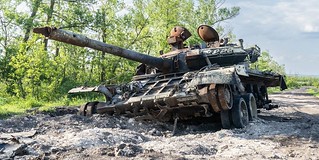The F4U Corsair, one of the best fighters of World War II, explained in detail
World War II was a golden age for aviation and marked a rapid technological leap for fighter aircraft.
Notable fighters such as the P-51 Mustang, the Spitfire, the A6M Zero, the P-38 Lightning, the Bf-109 and the Fw-190 fought in that war. On the list of the best fighters of that era, the Chance Vought F4U Corsair deserves a notable place. This was a naval fighter that made its first flight on May 29, 1940, with the US Navy as its first and largest operator.

One of the most notable features of the Corsair was its powerful radial engine, the Pratt & Whitney R-2800 Double Wasp, with 18 cylinders in a double star configuration and which reached, in some of its versions, a power of 2,400 hp, and was also used by other notable fighters such as the F6F Hellcat and the P-47 Thunderbolt. The combination of this powerful engine and a huge Hamilton Standard propeller (almost 4 meters in diameter) allowed the Corsair to reach a speed of 717 km/h, surpassing the 703 km/h of the excellent P-51 Mustang.

In addition to serving as a fighter aircraft (for which it had six wing-mounted 12.77 mm M2 Browning machine guns), the Corsair was also used as an attack and close support aircraft, as it could carry two bombs (with a combined weight of up to 1,800 kg) and high-velocity unguided rockets under the wings.

Between 1942 and 1953, 12,571 Corsairs were built. The success of this model is evident in the number of victories achieved by aircraft operated by the US Navy and Marine Corps: 2,140 enemy aircraft shot down and only 189 Corsairs lost in aerial combat, a ratio of 11 to 1.

This success explains the fact that the aircraft continued to be used after World War II, unlike other fighters of the time: Corsairs fought in the Korean War (1950-1953, where it was used mainly as an attack and close support aircraft, although one of them managed to shoot down a more modern and much faster MiG-15 jet fighter) and its use in aerial combat continued until 1969, during the so-called Football War between Honduras and El Salvador, when it was used by both sides.

A few months ago, the Blue Paw Print channel published an excellent video explaining in detail what the F4U-4 variant was like, indicating its armament, the construction of the aircraft and its characteristics when flying:
You can see here some screenshots from this magnificent video, whose level of detail gives us an idea of the many hours of work that its author has put into making it. Congratulations to Blue Paw Print for this excellent work.




---
Main image: Blue Paw Print.
|
Don't miss the news and content that interest you. Receive the free daily newsletter in your email: |
- Most read
- The problems of the VH-92A Patriot, the new US Marine One presidential helicopter
- An excellent documentary shows the inside of the B-17 Flying Fortress bomber
- The firearms used by the Pontifical Swiss Guard, the smallest army in the world
- A documentary that shows in detail the spherical turrets of the B-17 bombers
- The Spanish Navy will receive a second multipurpose ship of the 'Carnota' class
- Spanish mines used by Ukrainian defenders against Russian tanks
- A report that shows how a Boeing B-52 Stratofortress strategic bomber works

 ES
ES







Opina sobre esta entrada: